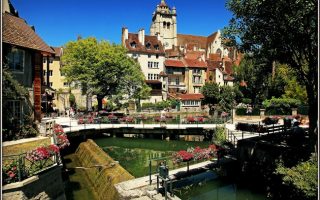Take it Slow on the Côte d’Azur
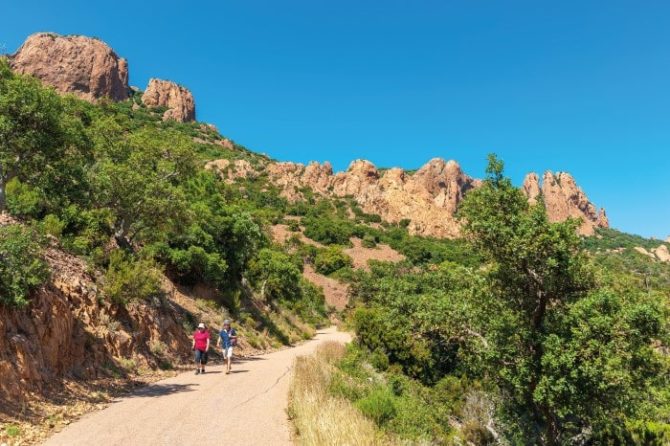

Guy Hibbert heads for the hills as slow tourism booms on the French Riviera.
The Côte d’Azur – literally, the Azure Coast – has for a century been associated with wealth, sun and sea: glittery beachside glamour, film stars, and shimmering harbours lined with sleek white yachts.
The tempting lifestyle and balmy climate are further enriched by numerous cultural offerings, with museums, galleries, and festivals to tease even the most jaded appetite. They remind us that the Riviera has beckoned not only the wealthy and well-connected but also artists, writers and creative types who appreciate the rarity of the light and the pleasing landscape. These magnetic charms are just as appealing for visitors today as they were in the days of the Belle Époque or in the 1920s and 30s, when rich Americans and their literary friends invented the summer season.
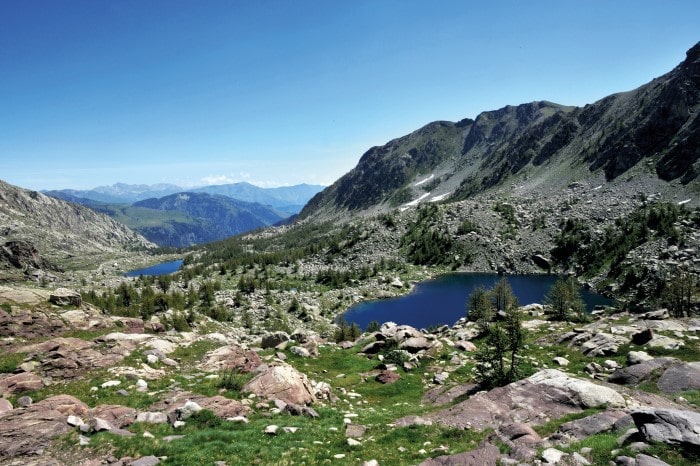
The Vallée des Merveilles. © Shutterstock
Inland Delights
Yet there is another side to the Côte d’Azur that has not, until recently, been given the attention it deserves. And for the visitor to discover this third layer of attractions, all they have to do is turn and face away from the sea, to explore the vast, unspoiled hinterland that lies within such easy reach of the bustling streets and busy roads of the coast.
For example, from the legendary medieval village of Saint-Paul de Vence to the summit of the Col de Vence is a 20-minute drive. By the time you reach the 900m summit, you have left behind the tourists and the traffic and in no time, you can be walking through a rugged landscape dotted with wild herbs, with dramatic views towards the Southern Alps in one direction and an infinity of Mediterranean blue ahead. And yet this is merely a foothill, a simple taster of even more beautiful and memorable experiences available if you choose to venture off the well-worn paths.
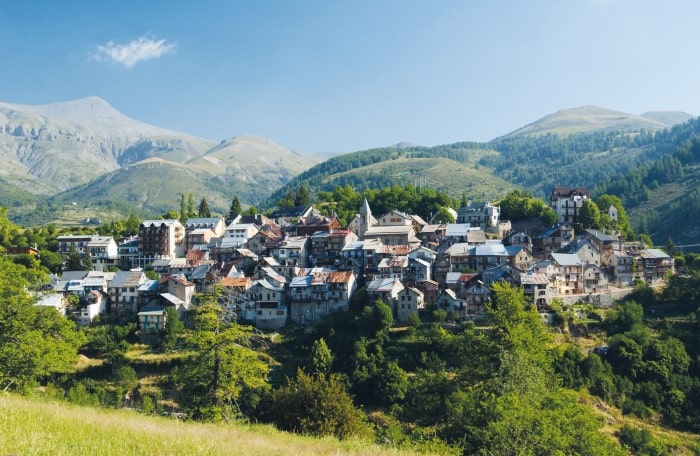
Beuil is the gateway to Mercantour National Park. © Shutterstock
Eco-tourism, sustainable tourism, slow tourism –whatever they choose to call it – we know instinctively that’s its time has come. Climate change demands we pay more attention to our footprint on this earth and tourism authorities all over France are keen to invest in programmes and incentives to develop new opportunities for visitors. To protect the beauty of its natural sites, the Côte d’Azur encourages its tourism operators to obtain certifications or labels from external bodies, which allow for the protection of heritage and for building teams around common aims, thus creating a virtuous circle. Thanks to these initiatives, visitors to the region get to discover increasingly rich and diverse places to stay and enjoy an ever-growing variety of rural experiences.
The Parc naturel régional des Préalpes d’Azur is an easily accessible area of natural beauty bordering the southern edge by Grasse, Vence and Carros. The landscapes here are dramatic. You can explore arid, boulder-strewn plateaux, such as Calern, Caussols, Saint-Barnabé and Plan des Noyes. Walking here is invigorating, with distant views to the Mercantour mountains or to the glittering blue of the Mediterranean, while underfoot is wild thyme, rosemary and lavender. On clear days, you can see across to Corsica, especially if you have reached the peak of Mont Cheiron at 1,778m! On the other hand, the deep gorges of the rivers Loup and Siagne cut through the landscape offering cooler walking and river swimming in the warmer months. Or if you really want to get your head out of the sun you can visit the stalactite-adorned caves at Saint-Vallierde-Thiey and Saint-Cézaire-de-Siagne.
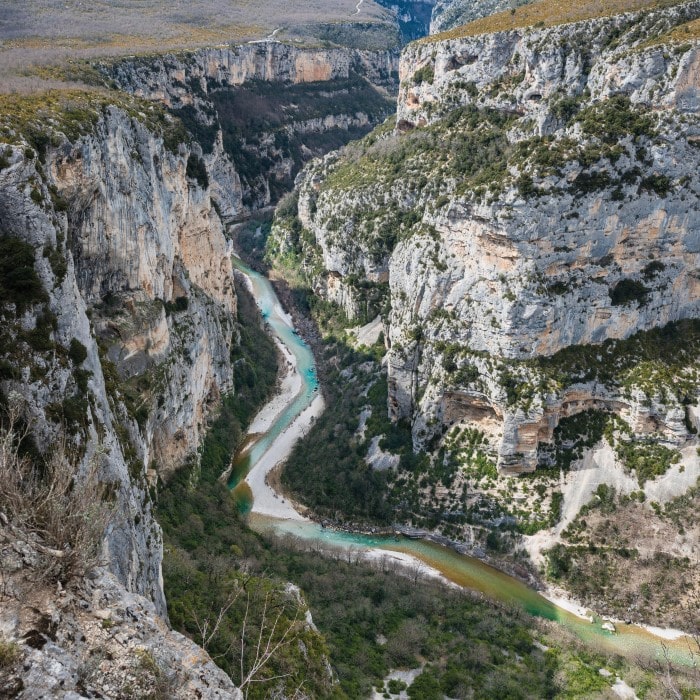
Verdon and Gorges du Verdon. © Shutterstock
Nature Diverse and Rare
The Préalpes park is home to over 2,000 types of flora and fauna, some very rare, like Orsini’s viper and the exquisite Diane and Apollo butterflies, and some unique in the world, like the wild geranium Erodium de Rodié and the Nice snowdrop. And if your legs aren’t up to hiking your way around the park, there’s an easier way to get up close to nature at the Réserve biologique des Monts d’Azur, 40 minutes from Grasse. Here, in Europe’s largest wild animal sanctuary you can stay in an eco-lodge, discover the colossal park in a horse drawn calèche (wagon) and encounter bison, deer, wild boar, wild goats, wolves and numerous other sauvage creatures. Or if you are intent on driving around (or taking a guided tour by car) you will want to include the picturesque villages of Saint-Jeannet, Tourrettes-sur-Loup and Gourdon, on the edge of the park, and Saint-Auban, Aiglun, Sigale and Les Mujouls further inland.
While we are still in sight of the coast let’s not forget to visit the mountains of the Esterel – 32,000 hectares of red rock ravines and volcanic outcrops which are classified as Natura 2000 (the European-wide network of nature protection areas). Hikers and mountain bikers enjoy venturing through its gorges and up to the high points of the pic de l’Ours but visitors with less energy can experience a great panorama by driving the 30km or so on the Corniche d’Or which runs from Cannes to Saint-Raphaël. Here the terracotta cliffs plunge into aquamarine coves.
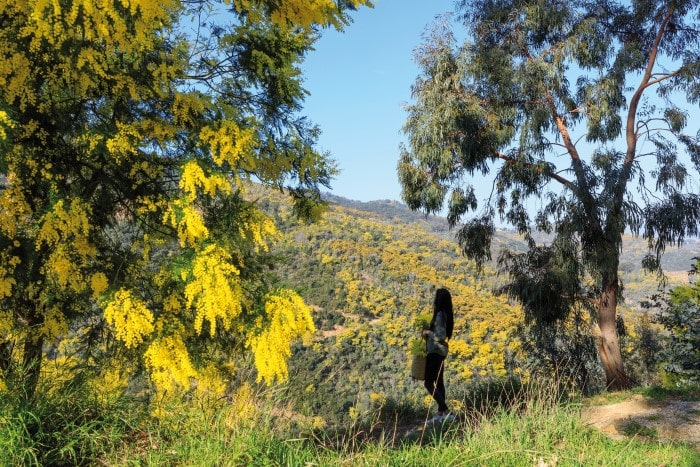
The mimosa transforms the landscape in winter. © Shutterstock/ CMOIRENC
In winter, the nearby hills of Tanneron are home to the Mimosa trail, a series of drives, cycle routes and walks through the billowing yellow flowers of the mimosa trees which have colonised the area. Another complete contrast from the bling and bustle of the famous Croisette, are the tranquil Îles de Lérins, two unspoiled islands just 15 minutes by boat from Cannes.
With altitudes in the Alpes-Maritimes reaching over 3,000 metres it’s no surprise to find a range of successful and popular ski resorts now emerging in a post-pandemic world keen to welcome skiers and non-skiers alike. With three large ski areas, Valberg, Auron and Isola 2000, and seven village resorts, the facilities on offer cater to all tastes and levels of snow sport ability. So, when you next hear someone say they swam in the Med in the morning and skied in the afternoon, you’ll know they weren’t kidding – from some ski runs you can even see the ocean!
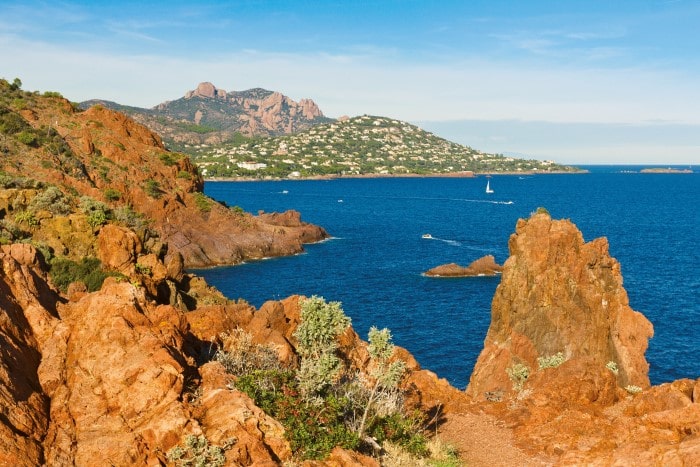
The Massif de l’Esterel. © Shutterstock
Mountains and Valleys
A little further inland, an hour from Nice, will bring you to the Mercantour National Park, a vast area on the border of France and Italy with eight valleys spread over 700 square miles. It’s the scale and diversity that is so striking: snow-covered alpine mountain tops and glacial lakes give way to enchanting valleys with rich biodiversity. In the beautiful Vallée des Merveilles you will be able to see some of the 40,000 prehistoric rock engravings that are a feature of the region around Mont Bégo. For serious hikers there are numerous refuges which allow you to stay overnight and carry on exploring more remote paths. Adventurers will enjoy canyoning, zip wires, rafting, climbing and caving. To learn how to be proficient there is even an indoor mountain activity training centre at the Vesúbia Mountain Park. For a little more comfort, there are increasing numbers of eco-tourism accommodations available: tipis, eco-lodges, treehouses and cabanes which get you as close to the stars and to nature as you can without abandoning all creature comforts.
Sustainable tourism is just as applicable to the dense urban conurbations that make up the coastline of the Côte d’Azur. Here it’s encouraging to see more and more green initiatives. Yellow safe cycle routes have sprung up (even more during the pandemic) – you can now cycle west from Nice to Cap Ferrat or east from Nice to Cagnes-sur-Mer and on to Antibes on dedicated lanes. Bike hire is popping up in more hotels and the self-serve vélo bleu rentals are now supplemented with e-vélo bleu electric bikes. The Promenade du Paillon is now a flourishing ‘green corridor’ in the heart of Nice, with bandstands, exotic plantations and a water mirror, which local kids adore. Hotels and chambres d’hôtes are keen to display their green credentials to an increasingly eco-aware tourism audience.
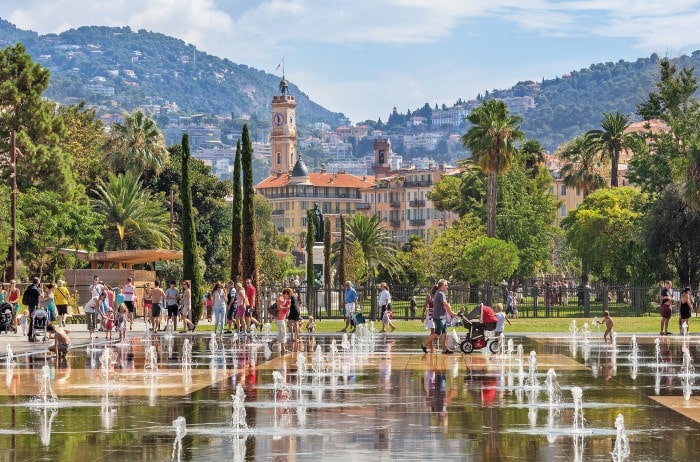
The Promenade du Paillon in Nice has been transformed into a lush green corridor. © Shutterstock
As you cycle along the coast admiring the Mediterranean’s extraordinary palette of colours it’s also worth remembering that sustainable tourism takes place in the seas and not just on land. In the last two decades the so-called Pelagos Sanctuary, a vast marine area that reaches out from Monaco beyond Corsica to the northern tip of Sardinia, has become more recognised. This joint initiative between Italy, France and Monaco is designed to protect the marine biodiversity from the numerous pressures caused by human activity in this special marine landscape, which is busy with shipping and water-based tourism. Numerous types of seals, dolphins and whales are protected by the Pelagos Agreement. Take a trip on the traditional sailing yacht Santo-Sospir, where the team from SOS Grand Bleu will take you for a dolphin watching sail from Cap Ferrat and explain their work protecting the marine environment.
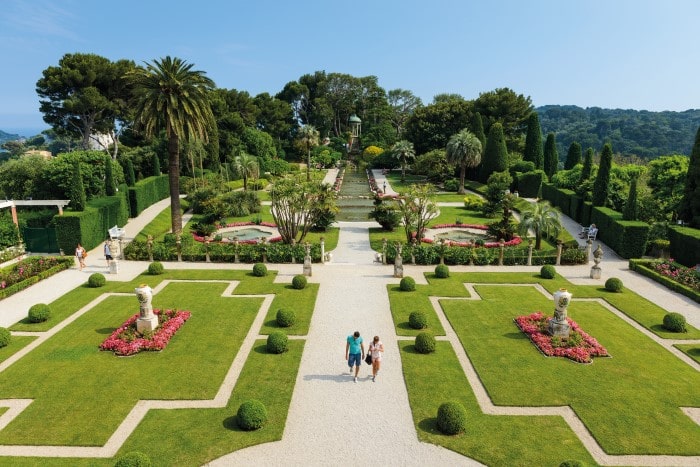
The famous gardens at the Villa Ephrussi de Rothschild. © Shutterstock
Heavenly Gardens
Last, but hardly least, the gardens of the Côte d’Azur are legendary. Many date back to the Belle Époque when wealthy property owners and plant enthusiasts took advantage of the mild climate to create gardens with spectacular varieties of plants from all over the globe. Some of the most memorable, must-see gardens are the Serre de la Madone and the Val Rahmeh in Menton, the Villa Ephrussi de Rothschild on Cap Ferrat, the Jardin Exotique in Èze and the perfume industry’s gardens at the International Perfumery Museum in Grasse. All the gardens of the Côte d’Azur are celebrated in a festival every two years.
From France Today magazine
Share to: Facebook Twitter LinkedIn Email
More in cote d'azur, tourism, travel
By Guy Hibbert
Leave a reply
Your email address will not be published. Required fields are marked *


